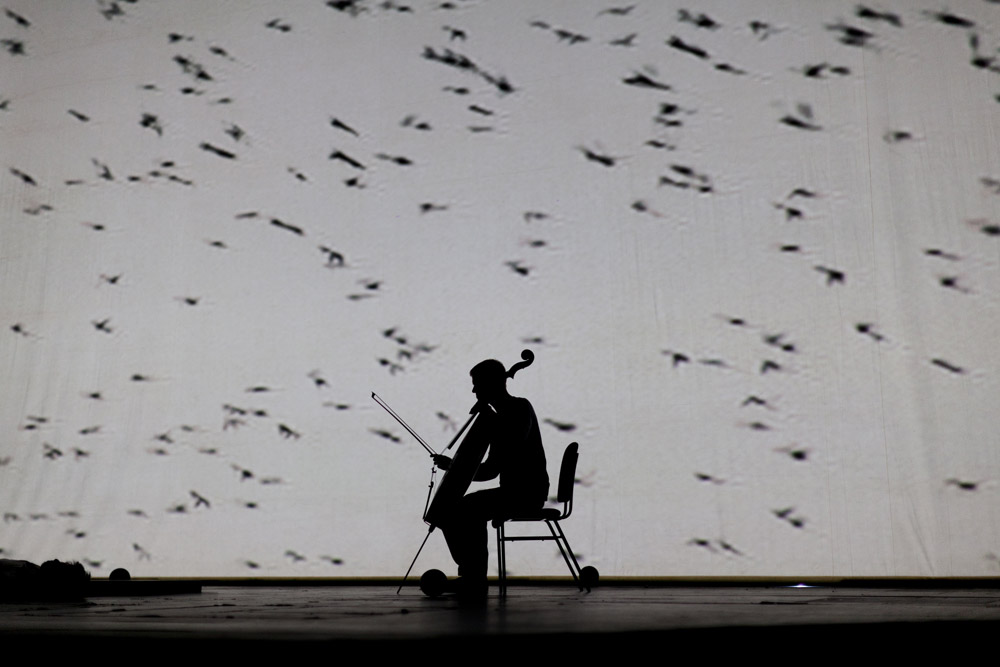
Hofesh Shechter and Antony Gormley
Survivor
The Barbican
12 January 2012
www.hofesh.co.uk
The dark and often explosive forces that Hofesh Shechter captured in his choreographer’s cut of Political Mother are taken to the next level in Survivor , which tips over into a work governed by Shechter’s music rather than by his movement. In fact, dance is very much a bit player, albeit one with sufficient quality to register in the “best supporting” category. While the genre of work follows a journey already underway, it also departs from Shechter’s usual focus on controlling all the elements since the composer/choreographer has let go of the design concept by becoming the latest dance maker to partner with the ubiquitous visual artist, Antony Gormley.
The style and sound of Political Mother – the Choreographer’s Cut – a nominee for best modern choreography in next week’s National Dance Awards – is revisited in this new work with the stage surrounded on three sides by high platforms containing more musicians than I could count, all of whom seemed to be either drummers or playing instruments with strings. Drum beats were very much the leit motif of this work with the lofty professional percussionists being joined on stage in two memorable sequences by up to 100 mobile, volunteer drummers, bashing away in unison. On the first occasion, their military-style chants and heavy beats responded to the despot-style shouting of a “conductor” mounted precariously on a chair. The fourth wall was also breached when two performers in the audience suddenly leapt into action.
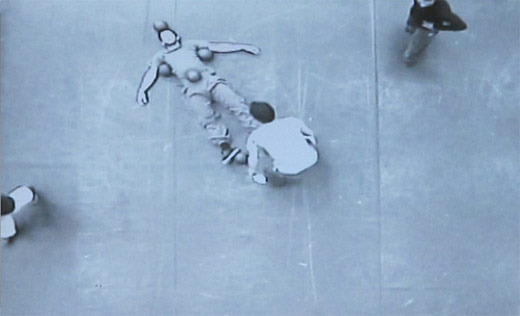
© Hofesh Shechter Company.
While it would be difficult to discern any particular narrative meaning for Survivor, Shechter and Gormley have clearly been influenced by powerful forces, either of the natural environment or man-made: thus, we had a diet of big, monochrome film imagery, ranging from a frothy, bubbling sea; huge waterfalls; thousands of birds making patterns in the sky and a controlled demolition of a high rise structure. The human forces of music and percussion sat strongly within these images and – though I make no pretence to be a music critic – Shechter’s composition (again assisted by Yaron Engler for percussion and Nell Catchpole with strings) was an impressive arrangement that mixed many moods. I particularly enjoyed a solitary piano piece midway through the work, accompanied by real-time camera footage, beginning with a close-up of the pianist’s hands and panning away as the camera was whisked up into the upper reaches of the theatre space.
Gormley’s influence could be clearly seen, from the opening line of musicians, rocking in and out of pinpoint spots above their heads, appearing like a row of medieval gargoyles to his special motif of the featureless, solitary man, often posed against the imposing images of Mother Nature’s power. One intriguing sequence had a stiff-limbed mannequin on a Kirby wire rotating around several feet above the stage (and it was surprising when he turned out to be human). Another man – wearing what appeared to be one of the Ghostbusters’ backpacks – roamed around, on the stage, under the stage and in the wings filming, with the images projected onto the screen behind. Incongruously, this included close-up film of a man, lying in a bath, apparently shivering and talking to God through the plughole. Performers emerged from hidden platforms under the stage (which became a novel way for Shechter and Gormley to arrive for their curtain calls) and heavy cannonballs were dropped from heights or rolled around by the five dancers.
Survivor had the capacity to surprise over and over again in it’s unbroken 75 minute duration but, for all this ingenuity, visual appeal and an outstanding score, the work lacked an important sense of theatre and there were a number of times (not least in two songs by an acoustic guitarist) when the momentum flagged and minds wandered. As has happened so often before, this collaboration by two individuals who are outstanding innovators in their own art, didn’t quite add up to the sum total of that brilliance.












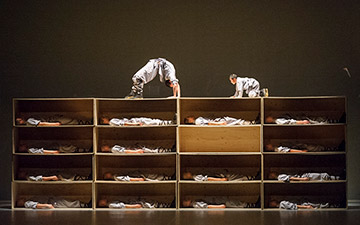
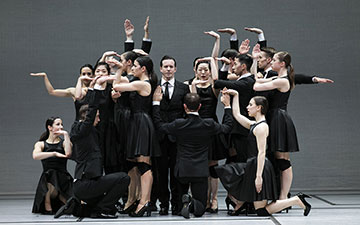
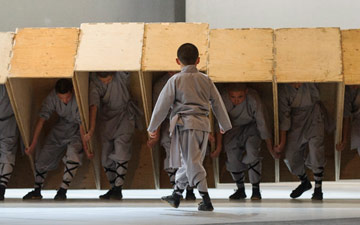
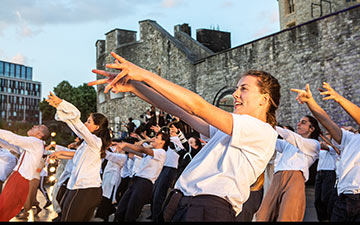
You must be logged in to post a comment.